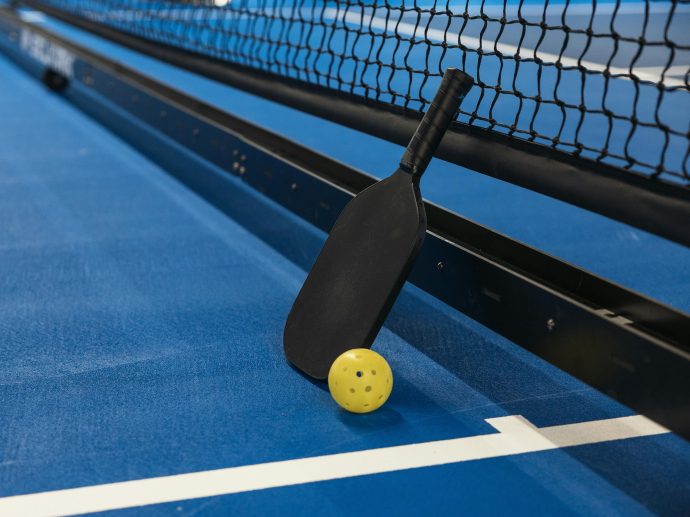Categories more
- Adventures (17)
- Arts / Collectables (15)
- Automotive (37)
- Aviation (11)
- Bath, Body, & Health (77)
- Children (6)
- Cigars / Spirits (32)
- Cuisine (16)
- Design/Architecture (22)
- Electronics (13)
- Entertainment (4)
- Event Planning (5)
- Fashion (46)
- Finance (9)
- Gifts / Misc (6)
- Home Decor (45)
- Jewelry (41)
- Pets (3)
- Philanthropy (1)
- Real Estate (16)
- Services (23)
- Sports / Golf (14)
- Vacation / Travel (60)
- Watches / Pens (15)
- Wines / Vines (24)
- Yachting / Boating (17)
Expert Tips for Maintaining Your Outdoor Pickleball Court
Published
02/11/2025Key Takeaways:
- Regular maintenance is crucial to preserve the quality and functionality of your pickleball court.
- Understanding the costs and necessary materials can guide effective court management.
- Implement practical strategies to address common wear and tear issues over time.
Table of Contents:
- Introduction to Pickleball Court Maintenance
- Understanding Court Construction and Costs
- Routine Cleaning and Upkeep
- Addressing Surface Wear and Repairs
- Preventive Measures for Longevity
- Enhancing the Playing Experience
- Conclusion: Ensuring an Optimal Court Environment
Introduction to Pickleball Court Maintenance
With the rising popularity of pickleball, maintaining a well-kept court has become more important for enthusiasts and community facilities. Proper upkeep extends the court's lifespan and enhances the playing condition and safety for users. Whether you're managing a personal backyard court or overseeing a community facility, consistent maintenance routines are essential to preserve the quality of the play environment. Understanding how much does it cost to build a pickleball court provides a foundation for respective upkeep expectations, helping owners plan financially for ongoing maintenance efforts.
Understanding Court Construction and Costs
Construction and budgeting for a pickleball court involve several considerations, ultimately influencing the type and scope of maintenance required. With guidance from industry experts, understanding the initial investment in court materials—such as asphalt, concrete, or modular tiles—can help identify potential wear points. Each material presents its own maintenance tasks and costs, affecting the required frequency and type of upkeep. Anticipating these impacts allows court owners to prepare effective management plans that address unique needs and balance cost with durability over the long term.
Routine Cleaning and Upkeep
Routine cleaning is a fundamental component of pickleball court maintenance, ensuring the surface remains debris-free and safe for play. Regular sweeping or blown cleaning is necessary to remove leaves, twigs, and other materials that could cause injury or damage. Additionally, washing the court with mild cleaner solutions can prevent the buildup of grime and mildew, which might compromise the surface integrity. Maintaining clear and visible boundary lines through periodic repainting also contributes to a quality playing environment. Keeping these routine tasks on schedule will reduce larger, more costly problems down the road, fostering an appealing and safe space for players.
Addressing Surface Wear and Repairs
Surface wear is inevitable, especially with consistent play and exposure to the elements. Promptly addressing cracks or uneven areas in the court surface is critical to maintaining safety and playability. Periodic inspections will help identify small issues before they evolve into significant repairs. Minor cracks can often be patched with filler products, but more extensive damage might require professional resurfacing. Resurfacing repairs damage and refreshes the court's appearance, promoting continuous enjoyment for players. Using effective repair techniques ensures long-term preservation and extends the court’s usability.
Preventive Measures for Longevity
Instituting preventive measures is a proactive approach to extending your court’s lifespan. Implementing a drainage system effectively handles water runoff, preventing pooling and potential surface erosion. Use high-quality equipment and accessories, such as nets and paddles, as they are less likely to cause abrasions and require replacement less frequently. Utilizing protective matting can shield high-traffic areas from wear. Encouraging players to wear appropriate footwear minimizes surface scuffing, contributing to prolonged court integrity. By adopting these preventive strategies, court administrators can significantly delay the wear-and-tear cycle, enhancing the overall playing conditions.
Enhancing the Playing Experience
Maintaining an inviting and well-equipped pickleball court enhances the playing experience. Beyond the basics, consider adding windscreens, scoreboards, and shaded seating for player comfort. Good lighting enables functionality during evening hours and is especially beneficial for community courts that host events or leagues. These enhancements, although additional, contribute to a well-rounded environment that promotes leisure and sport in equal measure, expanding on the overall enjoyment factor for users. Implementing these thoughtful additions fosters a welcoming atmosphere, encouraging participation and social interactions.
Conclusion: Ensuring an Optimal Court Environment
Proper maintenance of a pickleball court involves a balanced mix of regular upkeep, repairs, and enhancements to ensure a high-quality playing experience. With knowledge about construction realities and appropriate maintenance strategies, court owners can effectively manage their spaces for enduring functionality. As pickleball grows in popularity, providing well-maintained courts supports this momentum, offering players a reliable and enjoyable platform to engage in the sport. A commitment to consistent care will pay dividends through increased court longevity and sustained user satisfaction.















